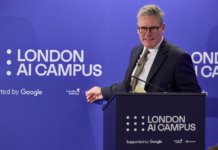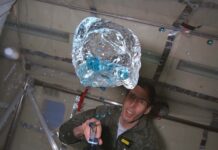Cutting-Edge HPC Infrastructure Boosts Clean Energy Research at ENEA Hub in Portici
In an exciting development for clean energy research, the ENEA hub in Portici, Naples, has introduced a state-of-the-art High-Performance Computing (HPC) infrastructure. This initiative, born out of a collaboration between Lenovo and Intel, is set to significantly enhance research capabilities, particularly in the realm of nuclear fusion.
The new HPC system is a powerhouse, consisting of 758 nodes, each equipped with two Intel® Xeon® Platinum 8592+ CPUs. This setup will catapult the computational prowess of CRESCO (Computational Center for Research on Complex Systems) from its current capacity of 1.01 Petaflops to an impressive 6.5 Petaflops. To put this in perspective, a petaflop equates to a thousand trillion calculations per second. This massive leap in processing power places CRESCO at the pinnacle of national supercomputing capabilities.
The Role of Sustainability in HPC Development
Sustainability was a key consideration in the selection of Lenovo as the partner for this ambitious project. The HPC solution provided by Lenovo not only boosts computational power but also enhances energy efficiency, an increasingly critical factor in technological advancements.
Lenovo’s Neptune Direct Water-Cooling technology is a standout feature, capturing up to 98% of the heat generated by the supercomputer. This innovative cooling method significantly reduces the energy required for traditional fan-based cooling systems. With better thermal management, the CPUs operate efficiently without reaching critical temperatures, thus avoiding any reduction in their maximum processing frequencies.
Moreover, the hardware used in this installation is manufactured at Lenovo’s facility in Hungary. This plant is strategically located in Europe and is designed with advanced, energy-efficient technologies, which contribute to reducing emissions during the transportation of computing infrastructure.
ENEA’s Comprehensive ICT Architecture
ENEA has developed a complex ICT (Information and Communication Technology) architecture that provides users with cutting-edge systems for calculations, modeling, and three-dimensional data visualization. This infrastructure extensively utilizes GRID technologies and currently includes six poles located in Frascati, Portici, Bologna, Casaccia, Trisaia, and Brindisi. Each of these sites is equipped with 3D computing and visualization capabilities, specializing in various application domains.
The CRESCO computing centers are instrumental in offering advanced computational services to ENEA users, as well as public and private partners. The institute engages in numerous application areas such as energy applications (like combustion and fluid dynamics), nuclear and fusion codes, climatological and environmental models, structural analysis of materials, and bioinformatics. In the energy sector, such computational power aids in forecasting and generative activities, offering solutions to enhance digitization and decarbonization processes across various sectors.
Expert Insights and Future Prospects
According to Alessandro de Bartolo, Country General Manager of Infrastructure Solutions Group at Lenovo in Italy, "High-performance computing and artificial intelligence are opening new horizons in vital areas such as sustainable economic development, climate, innovation in energy, and medicine. Lenovo is proud to support ENEA, a hub of excellence, in tackling these global challenges with our technologies, experience, and innovative capabilities."
Giovanni Ponti, Head of ENEA’s ICT Division of the Department of Energy Technologies and Renewable Sources, highlighted the significance of the new supercomputer, CRESCO8. "This development represents a significant technological advancement for ENEA, augmenting computing resources with cutting-edge parallel computing systems that ensure high energy efficiency. CRESCO8 will enable ENEA researchers and partners to perform complex simulations, numerical codes, and artificial intelligence algorithms in a next-generation high-performance parallel computing cluster, meeting the evolving needs of the scientific community."
Installation and Expertise
The installation of this advanced HPC system is managed by Ricca IT, a Lenovo-certified business partner. Ricca IT has garnered substantial experience in the fields of HPC and AI, establishing itself as a leading entity within the Italian technological landscape.
As the world faces pressing challenges related to energy consumption and climate change, the introduction of such advanced computing systems marks a pivotal step forward. By enhancing computational capabilities and prioritizing energy efficiency, the ENEA hub in Portici is poised to make significant contributions to clean energy research, potentially paving the way for groundbreaking advancements in nuclear fusion and other energy-related fields.
For further information on ENEA and its initiatives, you can visit their official website.
This development is a testament to the power of collaboration between industry leaders like Lenovo and Intel, showcasing how technological innovation can drive progress in critical research areas, ultimately benefiting society as a whole.
—
This article is intended to provide a comprehensive overview of the recent developments in HPC infrastructure at ENEA and how these advancements will bolster clean energy research. For more insights and updates on technological innovations, stay tuned to our blog.
For more Information, Refer to this article.
































